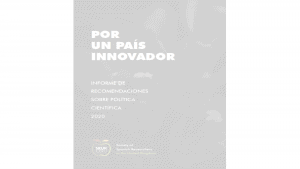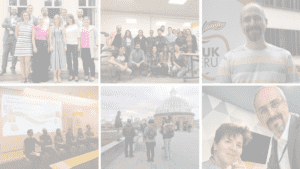What is the best way to communicate science? This seems to be a matter of debate. In some science communication conferences, I have heard people saying that the best science communication is in person and in small groups, since contact with the public is much more direct and it’s easier to see whether people are following your explanation. Other people, however, strongly believe in the power of online communication. In fact, sometimes it might seem that only those active on social media, with many followers, are the real science communicators.
Over the past few years, I have been able to try different science communication formats, including in-person talks as well as social networks such as Twitter and Instagram. However, during this last year, I have communicated science mainly on YouTube with my channel Cerebrotes, through my podcast, Mentes Covalentes, and by writing articles on different blogs such as Naukas and Dciencia.

Image source: News Today.
In my opinion, each format has different advantages and one format is not better than another. When I have given talks in person, I have loved interacting with the people there, especially at the end of the talk. Be it in schools, patient associations, cultural centres, science festivals, or stand-up comedy, I think this format can be an excellent way to bring science to more places and to connect with the public in a more personal way, especially in small events. However, this type of initiative tends to take place on certain special occasions and it can be a long time until they happen again, if they do at all. Therefore, if science communication only took place in these in-person events, I think we would be missing a great opportunity to continue communicating science. Furthermore, these events don’t always reach every city or neighbourhood.
The Internet makes it possible to reach more people and establish a more prolonged contact with science communication, rather than being limited to just a few moments. In addition, with the Internet it is possible to respond to specific interests thanks to search engines. In this sense, it is important to point out that the Internet is the main source of information for a large part of the public interested in scientific information. Although the interaction is not as direct as with in-person communication, almost always it is possible to leave comments and start conversations, answering questions publicly or privately.
When it comes to the different formats used wwithin online science communication, I think each of them allows to reach different audiences and to respond to different needs:
- Video makes it possible to create a more personal connection than writing does, especially if the communicator appears on screen. It is also very accessible, enjoyable, and particularly popular with young people.
- Podcasts are great for communicating science with an informal tone, creating an atmosphere in which it is easy to build rapport with the listener. This format can often give the audience a ‘fly on the wall’ experience as they listen to a conversation among friends talking about science. The listeners can also go about their daily life, like cooking, cleaning, walking, or trying to fall asleep while they continue learning.
- Blogs are often read by a more mature audience than the average YouTube consumer. Also, at least in my experience, communicating science in written form leads often to deeper personal reflections, expressing them in a more paused and formal way, although it is also possible to give your blog a fun tone.
With regard to traditional media, such as radio, television, and press, I think it is quite clear how powerful they can be. They can reach a wide audience, including people who perhaps would not actively search for scientific information but who nonetheless enjoy science communication as part of their leisure time if they find it in big media. Documentaries that inspire and bring science closer to the public, appealing to emotions; feature reports that delve deeper into a specific topic including interviews with experts; television shows that talk about scientific topics in a fun and informal way; radio shows that answer listeners’ questions about health; newspaper sections dedicated to covering science news… All are welcome. Of course, besides the Internet and traditional media, we should not forget about museums, temporary exhibitions, and projects that combine science with art, showing science as something creative and beautiful.
In my opinion, we should aim for a wide variety of formats to reach different audiences and respond to different needs. Social media has its flaws too, such as the difficulty in distinguishing rigorous scientific content from pseudoscience. We need to continue to promote critical thinking when approaching this problem. The science communication community needs to embrace constructive self-criticism to keep improving and not fall into bad practices such as ridiculing people who believe certain myths or who do not have a great knowledge of science. In my opinion, mockery only alienates the people we want to reach.
It is upon us to make science communication rigorous, diverse, inclusive, and respectful; encouraging the desire to keep learning and engaging in critical thinking.
* * *
By Clara García Gorro (@Cerebrotes), Biochemist and doctor in Neuroscience. She is a science communicator who focuses on neuroscience, health, and psychology.






